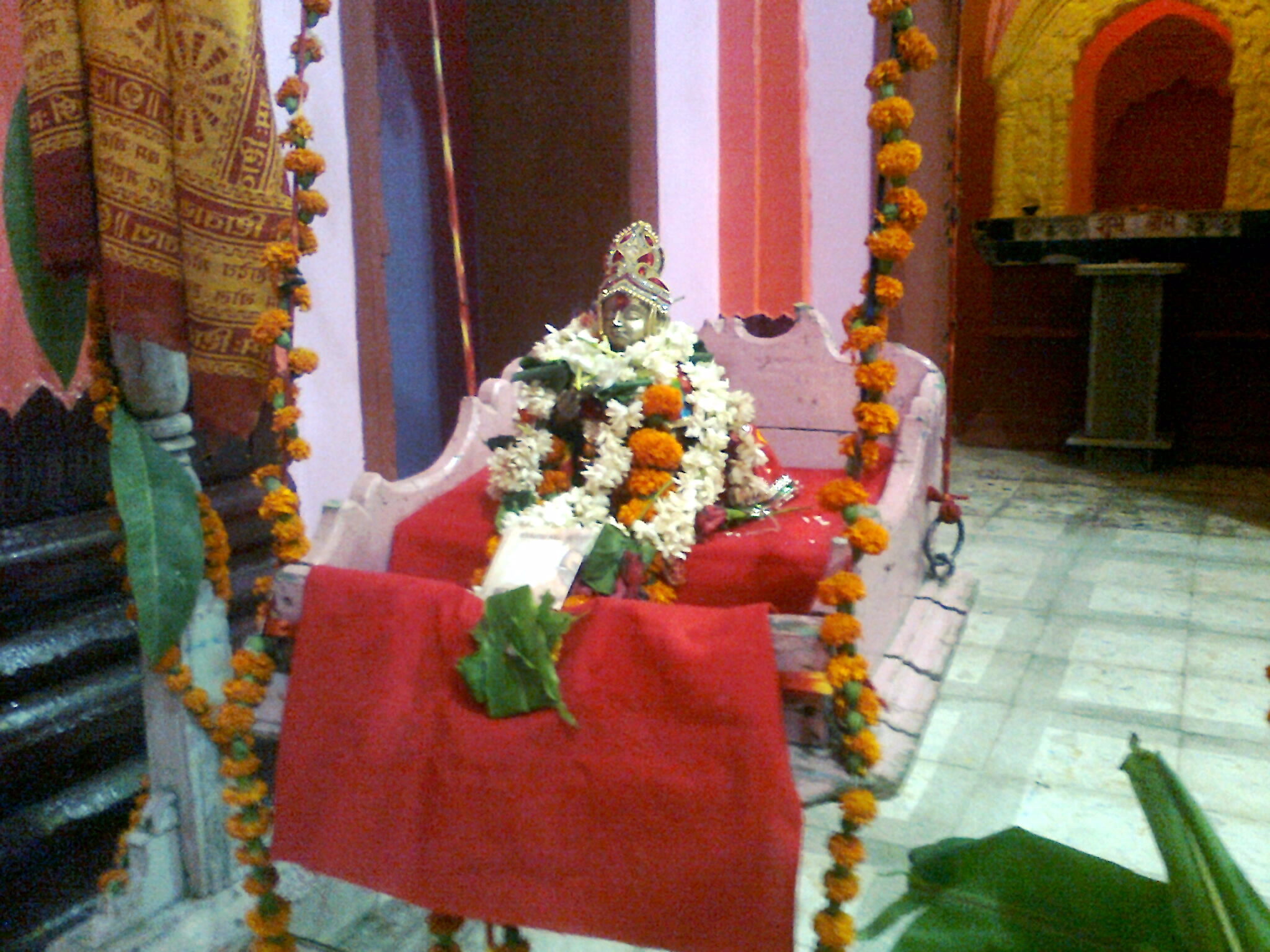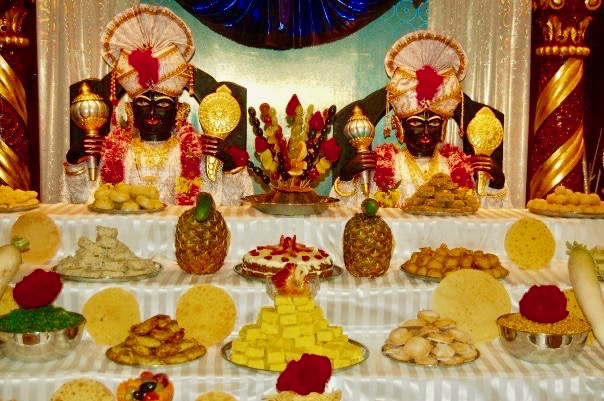|
Rupani, Nepal
Rupani ( ne, रुपनी) is a small Gaunpalika, rural municipality in Saptari District in the Sagarmatha Zone of south-eastern Nepal. At the time of the 2019 Nepal census it had a population of 29,989 people living in about 8500 individual households. Cultural Traditions Major religious celebrations include the major Hindu festivals Vijaya Dashami, Diwali, Dipawali, Chhath, Holi, Ram Navmi, Janai Purnima or Rakshabandhan, Saraswati Puja or Vasant Panchami, Jeetia, Chauth Chandra, Vishwakarma Puja, Govardhan Puja, Bhai Tika, Chaite Dashain and so on. The Dashain, Deepawali, Chhath and Holi are heavily celebrated with full devotee and proper rules. The locals people take pride in the way these festivals are celebrated with joy and happiness. and Muslim festival "Eid al-Fitr" and "Eid al-Adha" Religious Sites Though its name is given after Rupani Devi. It is popular for Shiva Sani Dham in the northern part of Chure hills which is about from the East-West Highway and Dina ... [...More Info...] [...Related Items...] OR: [Wikipedia] [Google] [Baidu] |
Gaunpalika
A gaunpalika ( ne, गाउँपालिका, lit=rural municipality, translit=Gāum̐pālikā ) is an administrative division in Nepal. The Ministry of Federal Affairs and Local Development dissolved the existing village development committees and announced the establishment of this new local body. It is a sub-unit of a district. There are currently 460 rural municipalities. History The village development committee was the previous governing body of villages in Nepal. They were replaced on 10 May 2017 by the rural municipalities which were formed by combining different VDCs. The decision was taken by the cabinet of Nepal after modifications in the report proposed by the Local Level Restructuring Commission. Initially 481 rural municipalities were formed but it was later changed to 460 municipalities. According to the Ministry of Federal Affairs and Local Development the new bodies were to be called "rural municipality" and not "village council" which was the literal tran ... [...More Info...] [...Related Items...] OR: [Wikipedia] [Google] [Baidu] |
Ram Navmi
Rama Navami () is a Hindu festival that celebrates the birthday of Rama, the seventh avatar of the deity Vishnu. people from different parts of Jharkhand attended the world famous international Hazaribagh procession organized in the city every year on the occasion of Ram ramnavmi birt anniversary of Rama amid chants of Jai shri ram. Vaishnava tradition of Hinduism. The festival celebrates the descent of Vishnu as the Rama avatar, through his birth to King Dasharatha and Queen Kausalya in Ayodhya, Kosala. This festival is a part of the Chaitra Navaratri in the spring, and falls on the ninth day of the bright half (Shukla Paksha) of Chaitra, the first month in the Hindu calendar. This typically occurs in the months of March or April by the Gregorian calendar. Rama Navami is an optional holiday for government employees in India.Holiday Calendar ... [...More Info...] [...Related Items...] OR: [Wikipedia] [Google] [Baidu] |
East-West Highway
East West (or East and West) may refer to: *East–West dichotomy, the contrast between Eastern and Western society or culture Arts and entertainment Books, journals and magazines *'' East, West'', an anthology of short stories written by Salman Rushdie * ''East and West'' (book), a 1998 book by Christopher Patten, the last British governor of Hong Kong *''Philosophy East and West'', an international, interdisciplinary academic journal *''East and West'', a quarterly English-language journal published 1950 to 2009 by the Istituto Italiano per l'Africa e l'Oriente Film, TV and theatre * ''East and West (film)'', a 1923 Austrian silent film *''East/West'' (also known as ''Est-Ouest''), a 1999 film by Régis Wargnier *East West Players, an Asian American theatre organization *''East West 101'', an Australian television drama series *''Purab Aur Paschim'' (East and West), a 1970 Bollywood movie Music * ''East-West'' (The Butterfield Blues Band album), 1966 * ''East West'' (Julia F ... [...More Info...] [...Related Items...] OR: [Wikipedia] [Google] [Baidu] |
Shiva Sani Dham
Shiva (; sa, शिव, lit=The Auspicious One, Śiva ), also known as Mahadeva (; ɐɦaːd̪eːʋɐ, or Hara, is one of the principal deities of Hinduism. He is the Supreme Being in Shaivism, one of the major traditions within Hinduism. Shiva is known as "The Destroyer" within the Trimurti, the Hindu trinity which also includes Brahma and Vishnu. In the Shaivite tradition, Shiva is the Supreme Lord who creates, protects and transforms the universe. In the goddess-oriented Shakta tradition, the Supreme Goddess (Devi) is regarded as the energy and creative power (Shakti) and the equal complementary partner of Shiva. Shiva is one of the five equivalent deities in Panchayatana puja of the Smarta tradition of Hinduism. Shiva has many aspects, benevolent as well as fearsome. In benevolent aspects, he is depicted as an omniscient Yogi who lives an ascetic life on Mount Kailash as well as a householder with his wife Parvati and his three children, Ganesha, Ka ... [...More Info...] [...Related Items...] OR: [Wikipedia] [Google] [Baidu] |
Bhai Tika
Bhai Dooj, Bhaubeej, Bhai Tika, Bhai Phonta or Bhratri Dwitiya is a festival celebrated by Hindus on the second lunar day of the Shukla Paksha (bright fortnight) of Kartika, the eighth month of the Vikram Samvat Hindu calendar or the Shalivahana Shaka calendar. It is celebrated during the Diwali or Tihar festival and Holi festival. The celebrations of this day are similar to the festival of Raksha Bandhan. In the southern part of India, the day is celebrated as Yama Dwitiya. In the Kayastha community, two Bhai Doojs are celebrated. The more famous one comes on the second day after Diwali. But the lesser-known one is celebrated a day or two after Diwali. In Haryana and Uttar Pradesh a ritual also followed, a dry coconut (named gola in regional language) with klewa tied along its width for worshipping is also used at the time of doing ''aarti'' of a brother.In Bengal the day is celebrated as Bhai Phota, which comes one day after Kali Puja. Regional names The festival is known as: ... [...More Info...] [...Related Items...] OR: [Wikipedia] [Google] [Baidu] |
Govardhan Puja
Govardhan Puja (), also known as Annakut or Annakoot (meaning a “mountain of food”), is a Hindu festival in which devotees worship Govardhan Hill and prepare and offer a large variety of vegetarian food to Krishna as a mark of gratitude. For Vaishnavas, this day commemorates the incident in the ''Bhagavata Purana'' when Krishna lifted Govardhan Hill to provide the villagers of Vrindavan shelter from torrential rains. The incident is seen to represent how God will protect all devotees who take singular refuge in him. Devotees offer a mountain of food, metaphorically representing the Govardhan Hill, to God as a ritual remembrance and to renew their faith in taking refuge in God. The festival is observed by most of Hindu denominations all over India and abroad. For Vaishnavas, particularly the Pushtimarg of Vallabha, the Gaudiya Sampradaya of Chaitanya and the Swaminarayan Sampradaya, it is one of the important festivals. The Annakut festival occurs on the first lunar day of th ... [...More Info...] [...Related Items...] OR: [Wikipedia] [Google] [Baidu] |
Vishwakarma Puja
Vishwakarma Jayanti is a day of celebration for Vishwakarma, a Hindu god, the divine architect. The festival is observed primarily in factories and industrial areas, often on the shop floor. As a mark of reverence the day of worship is marked not only by the engineering and architectural community but by artisans, craftsmen, mechanics, smiths, welders, industrial workers, factory workers and others. They pray for a better future, safe working conditions and, above all, success in their respective fields. Workers also pray for the smooth functioning of various machines. In many part of India there is government holiday on 17 September for the celebration but it is not considered as a national holiday but as a "restricted holiday". It falls on 'Kanya Sankranti' of Hindu calendar. It is generally celebrated every year between 16 to 18 September, according to the Gregorian calendar, which is on the last day of the Indian Bhado month. The festival is also celebrated in Nepal. Haldi ... [...More Info...] [...Related Items...] OR: [Wikipedia] [Google] [Baidu] |
Chauth Chandra
Chauth (from Sanskrit, meaning ''one fourth'') was a regular tax or tribute imposed from the early 18th century by the Maratha Empire in the Indian subcontinent. It was an annual tax nominally levied at 25% on revenue or produce, hence the name, on lands that were under nominal Mughal rule. The sardeshmukhi was an additional 10% levy on top of the ''chauth''. A tribute paid to the king, it was started by Koli Maharaja Som Shah of Ramnagar. Opinions on the function of the chauth vary. According to M G Ranade, the chauth was charged to provide armed security for a state by the Marathas and is thus comparable to the system of subsidiary alliances that was used by Lord Wellesley to bring Indian states under British control. The historian Jadunath Sarkar has argued that the chauth was essentially a tax paid by those states that did not want the Marathas to enter into their realm. The chauth thus served as protection money against Maratha invasions of the chauth paying state. Th ... [...More Info...] [...Related Items...] OR: [Wikipedia] [Google] [Baidu] |
Vasant Panchami
Vasant Panchami, also called Saraswati Puja in honor of the Hindu goddess Saraswati, is a festival that marks the preparation for the arrival of spring. The festival is celebrated in Indian religions in different ways depending on the region. Vasant Panchami also marks the start of preparation for Holika and Holi, which take place forty days later. The Vasant Utsava (festival) on Panchami is celebrated forty days before spring, because any season's transition period is 40 days, and after that, the season comes into full bloom. Nomenclature and date Vasant Panchami is celebrated every year on the fifth day of the bright half of the Hindu lunisolar calendar month of Magha, which typically falls in late January or February. Spring is known as the "King of all Seasons", so the festival commences forty days in advance. It is generally winter-like in northern India, and more spring-like in central and western parts of India on Vasant Panchami, which gives credence to the idea tha ... [...More Info...] [...Related Items...] OR: [Wikipedia] [Google] [Baidu] |




_(8638392628).jpg)